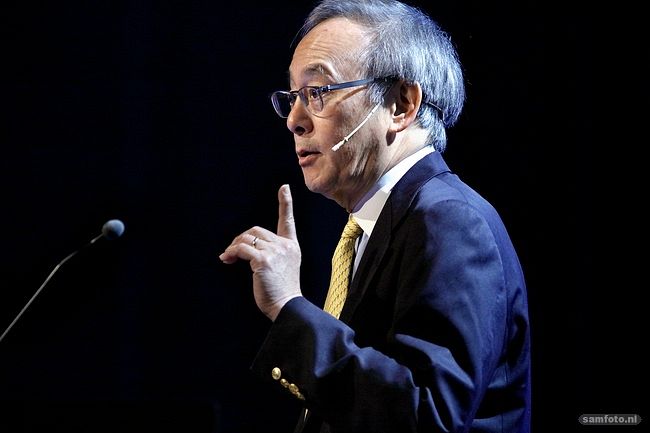If you do not change direction, you may end up where you are heading. With this Chinese proverb, American Nobel Laureate in Physics, Dr. Steven Chu of Stanford University summed up the predicament for humanity, which is heading for big planetary changes due to climate change.
If you do not change direction, you may end up where you are heading. With this Chinese proverb, American Nobel Laureate in Physics, Dr. Steven Chu of Stanford University summed up the predicament for humanity, which is heading for big planetary changes due to climate change.
From his unique perspective, Chu, who worked as U.S. Secretary of Energy of the first Obama administration, gave the audience of around 1,000 his comprehensive run-down of where we should go from here. He often added a touch of humour, despite his sometimes grim message. Dr. Andrzej Stankiewicz, professor of Process Intensification at the Faculty of Mechanical, Maritime and Materials Engineering (3mE) and director of TU Delft’s Process Technology Institute which organised the evening, was delighted when the Nobel winner agreed to come to speak on campus.
Chu presented recent data strengthening the case for climate change with big changes observed and heightened risks highlighted that were unknown a decade ago. His most graphic example showed how Antarctica glaciers are speedily discharging land ice into the ocean at a rate of 1km per year.
“Even if we stop emitting greenhouse gases now we’re faced with a delayed response, which will only reach equilibrium in 100-300 years,” he said. “Sea level rises of six to nine metres will affect our grandchildren’s children.” We also are dangerously locked into fossil fuels. “Extraction can keep pace with the demand for fossil fuels for the next 50-100 years,” he said. “If we don’t find better solutions, we will use the oil, gas and coal.”
For him the challenge of this century is to quit fossil fuels and use excess clean electricity to recycle carbon from the atmosphere to make high energy density, liquid hydrocarbon fuels, to be shipped and stored anywhere in the world. Exceeding his expectations, solar power projects have matured, scaled up and decreased in price, attracting investors. Wind energy is scaling up and moving offshore to harvest stronger more constant winds. These systems will be feasible for up to 50% of the energy mix. But we still need better long distance transmission, storage and a continuous back up of liquid fuels to make up for their intermittency.
Chu describes himself as a technology optimist. “I’m reassured because I see people going down promising pathways to tackle the issues,” he said. During the Q&A session he encouraged young people to learn more, be informed and get the scientific facts out there to drive positive change.
“After four years in government, I wasn’t sure my brain would still work,” he said. But he returned to Stanford University, where he is spearheading nanotechnology research in batteries, air pollution filters and novel microscopy to examine cells at the molecular level.



Comments are closed.